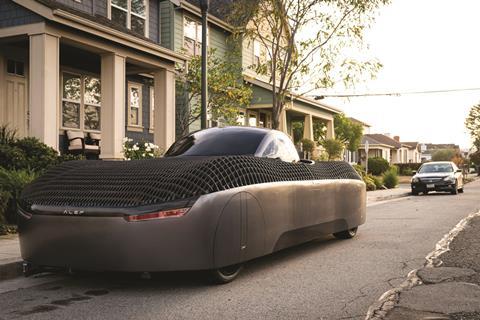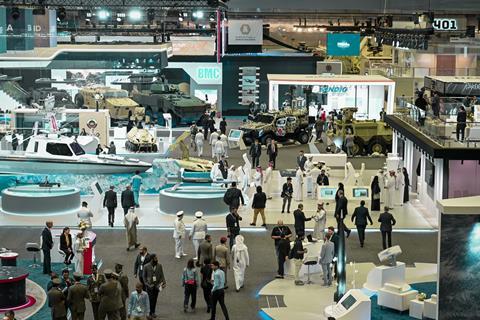The lighter side of Flight International.
Car you serious?
Electric vertical take-off and landing (eVTOL) aircraft might be a bit of a mouthful, but we’ve got used to it. Despite this, Adam Goldstein, chief executive of eVTOL developer Archer, hates the term, and wants to replace it with “flying car”.
It seems a strange choice given that neither Archer’s Midnight – nor any of its competitors – are designed to travel on terra firma. They don’t have wheels, for a start.
On the contrary, there have been any number of flying car prototypes – automobiles that can with a flick of a switch take to the air – but that sub-segment seems even more pie-in-the-sky than the dozen or more eVTOL types under development, all of which (China’s eHang apart) remain uncertificated.

There is Slovakia’s dual-mode KleinVision AirCar, which received its certificate of airworthiness from the country’s civil aviation authority more than two years ago but has yet to go into production.
It has been three years since European regulators came up with a special category of certification for the PAL-V Liberty, a roadworthy gyroplane. Little has been heard of it since.
The same fate seems to have befallen US-based Terrafugia, which shut down development of its Transition flying car early in the pandemic.
Hopes may rest with Alef Aeronautics, which revealed “the world’s real flying car” at last year’s Detroit Auto Show.
There have been plenty of early adopters prepared to stump up just $150 to “pre-order” Alef’s $299,999 wingless wonder – or $1,500 to join the “priority queue” – but, like the prospective customers, we’re not getting carried away by flying cars just yet.
Qatar’s bizarre bazaar
Amid rising global divisions it’s reassuring to know that there are still places where mutually hostile nations happily rub shoulders – such as Middle Eastern arms fairs.
Our man at Qatar’s recent DIMDEX exhibition reports that the stand of UK defence champion BAE Systems was wedged between two Chinese companies, while the Iranian ministry of defence booth was hosting uniformed Russian military personnel, not 100m away from a Ukrainian exhibit running videos on a loop graphically illustrating the… er… effectiveness of its weapon systems against Moscow’s soldiers and ships.

Meanwhile, wandering the aisles and browsing the bazaar of goods was a Taliban delegation.
However, the spirit of detente did not seem to spread as far as February’s Singapore show, where Airbus was forced to apologise after a group of Chinese visitors claimed they were prevented from visiting an A400M operated by Germany’s Luftwaffe on the static display.
A video circulated by a Chinese blogger appeared to show a representative of the European manufacturer asking him for his nationality, and, after being told, refusing him entry because “it’s German rules, it’s military restrictions”. His account was corroborated by other Chinese show-goers who said they had received similar treatment.
Amid the online furore, Airbus later clarified: “We immediately communicated and co-ordinated with the customer and our Airbus teams at the show to ensure that the aircraft was open to all visitors for the remainder of the air show.”

Perhaps Airbus was recalling an incident at the Zhuhai air show in 2010, when reporters who were not Chinese citizens were banned from the auditorium when Comac launched its C919. Our intrepid reporter had to stand under an open window near a bathroom to hear details of how Beijing planned to take on the Airbus and Boeing narrowbody duopoly.
Sometimes at air shows though there can be too much access. At Aero India in 2011, lax security meant our two scribblers were free to get up close and personal to all the fighters in the contest for New Delhi’s Medium Multi-Role Combat Aircraft requirement, including checking out the highly sensitive intakes of the likes of the Dassault Rafale, Lockheed Martin F-16, and Saab Gripen.
Philosophical approach
From the open-and-shut-case files of the US National Transportation Safety Board comes this tale of woe involving a Piper PA-34 Seneca pilot who, being new to the aircraft type, was receiving instruction regarding landing technique on 9 January.
During the downwind leg of the traffic pattern at Groton New London airport in Connecticut, the safety board says, the pilot and instructor were “having a conversation about when to extend the landing-gear”.
After an exchange with air traffic control over a possible change of runway, the pilot performed a normal approach to landing.
“The pilots reported that they realised they had forgotten to extend the landing gear when they heard the airplane contact the runway,” says the inquiry.
Piper named the Seneca after the Native American people, rather than the Roman philosopher – who reputedly said “a gem cannot be polished without friction”, without mentioning things you shouldn’t try polishing with friction, like the underside of a PA-34.


























